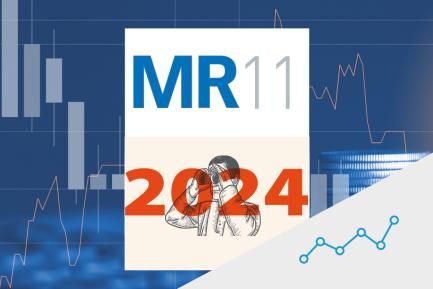
Autumn rally in the financial markets

As was the case in late October, the performance of risk assets was driven by a positive tone among investors during much of November. Some of the main factors behind this optimism included signs of moderation in the inflationary tensions, the somewhat less pronounced slowdown in economic activity and the tentative stabilisation of the energy markets, as well as the confirmation that the trajectory of fiscal policy in some countries (such as Italy and the United Kingdom) looks set to remain in line with monetary policy objectives. Even in China, which is facing a difficult health situation, the authorities gave slight glimpses of a possible relaxation of its zero-COVID policy. In this context, the major central banks appeared to be in favour of reducing the pace of monetary tightening. In the financial markets, expectations of a possible pivot in monetary policy triggered a rally in international stock markets and in fixed-income assets, as well as a depreciation of the dollar. This optimism helped to reduce the cumulative losses in the year, albeit in a highly uncertain and volatile environment.

The minutes of the FOMC’s November meeting reflected a somewhat more relaxed tone regarding the future path of monetary policy. The Fed members supported further rate hikes at the upcoming meetings, but were open to a reduction in the pace of the increases after having already introduced four consecutive 75-bp rises. This «pivot» to a less aggressive stance was corroborated by Jerome Powell himself, who stated that there could be a change in the pace of monetary tightening as soon as the December meeting. However, Powell also warned that, despite the slight yield in inflation, it remains very high and the labour market is showing little sign of slowing down, which justifies further interest rate hikes (alluding to the possibility of keeping rates somewhat higher and for a little longer). Nevertheless, the financial markets are assuming that the Fed will slow the process of rate hikes in December (with a 50-bp increase up to the 4.25%-4.50% range), and that by the end of 2023 it will once again stand at around 4.50%, almost 0.5 pps lower than that forecast in October. This shift in expectations contributed to the reduction in US sovereign debt yields from the highest levels of the year. In November, the yield on the 10-year bond dropped by more than 40 bps, to around 3.6%, while in the case of the 2-year bond it fell by around 20 bps, to around 4.3%.

In the euro area, the minutes of the monetary authority’s meeting showed its members’ support for the 75-bp interest rate hike implemented in October. With regard to the forthcoming meetings, however, it was clear that opinions were divided over how to manage the tightening of financial conditions in a scenario marked by inflation that remains very high and the emergence of downside risks to economic activity. Nevertheless, just as in the US, the markets anticipate a moderation in the cycle of rate hikes in the upcoming meetings, with a 50-bp increase expected at the December meeting (bringing the depo rate to 1.00% and the refi rate to 2.50%). This movement led to a widespread decline in euro area sovereign debt yields in the long sections of the curve, albeit to a lesser extent than in the case of US debt.

The spread of risk-on sentiment, driven by the optimism in the financial markets mentioned earlier, eased the buying pressure on the dollar which it had been experiencing since Q2 with the beginning of the Fed’s rate hikes and the outbreak of war in Ukraine. This favoured the appreciation of the euro, which consolidated its exchange rate above parity against the dollar. The pound sterling also appreciated significantly against the dollar, by more than 5% in November, reflecting a good reception among investors regarding the fiscal measures announced by the new prime minister Rishi Sunak.

Uncertainty surrounding future crude oil demand in a context of slower economic growth led to the oil price falling by 10% in November. This trend was reversed in early December as a result of the emergence of signs of a possible relaxation of the health policy in China, the start of the EU embargo on Russian crude oil (see the Focus «Europe and the mission to decouple from Russian oil: an achievable goal in the short-term» in the MR10/2022) and the imposition of a price cap on Russian oil by the G7. Specifically, the EU and the G7 agreed not to buy Russian oil transported by sea above 60 dollars a barrel. This measure came into force on 5 December, although an extension is given until 19 January for vessels that were loaded before that date. The European gas price, meanwhile, fell once again in November on average, favoured by the high levels of inventories amassed by the EU and a relatively warm autumn. However, in late November and early December, gas prices began to climb as temperatures fell in Europe.

For the second consecutive month, the major stock market indices performed well and recovered some of the losses accumulated during the year. In addition to the factors mentioned above, this improvement was also favoured by the end of the Q3 business earnings campaign, which resulted in a higher balance of profits than that expected by the consensus of analysts. The gains also extended to the emerging country indices, with the MSCI Emerging Markets index closing November up around 15%. Part of this rally was due to the gains registered in China’s stock markets, which benefited from government measures aimed at supporting the real estate sector, as well as expectations of a less stringent approach to COVID that would favour the Asian giant’s economic recovery.



